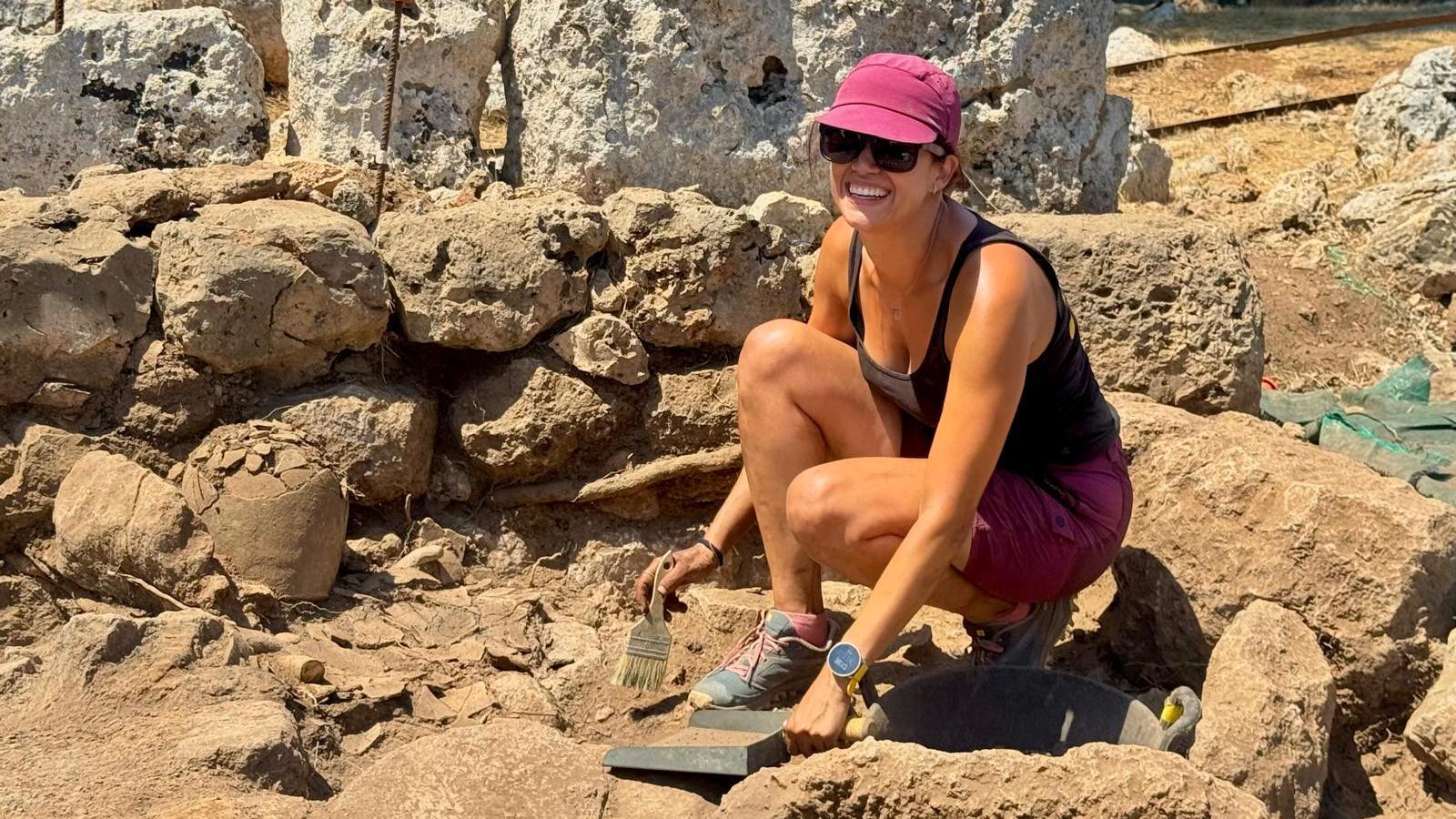"In archaeology, we often work with the trash of prehistoric people."
The 2025 excavation campaign at the Talayotic settlement of Illot concludes "with promising results," explains archaeologist Raquel Barceló.


PalmThe excavation campaign for the SN2 sanctuary in 2025 at the Talayotic settlement of Illot has concluded "with promising results." Archaeologist Raquel Barceló, director of the initiative, explained to ARA Baleares that during the work they have been able to document "new structures and collect all kinds of samples" that will allow us to deepen our understanding of the daily life and rituals of Talayotic society in Mallorca.
According to Barceló, Illot is "one of the largest sites on the island, and despite being surrounded by hotels in the middle of a tourist center, it remains in a good state of preservation." This situation "has generated more work than initially anticipated, but it has also allowed us to obtain not only objects and soil samples from the period, but also possible plant remains and even pollen." "All of this opens the door to a more precise and detailed analysis," he comments.
Among the latest discoveries, a possible fireplace stands out, a space that could have been used for ritual or domestic activities. Now, to continue unraveling the mysteries of this sanctuary, the second phase of the investigation begins, which will be carried out in the laboratory. "What action movies usually portray is that the important thing is to find the object, but the reality is that often the object itself doesn't tell anything. The story is told by the object in its context, with what's associated with it," Barceló emphasizes.
This campaign is part of the project Chronology and functionality of the Majorcan sanctuaries and the SN1 and SN2 structures of the Islet: a multi-proxy analysis, coordinated by the Mediterranean Institute for Advanced Studies (IMEDEA, CSIC-UIB) and the Sant Llorenç des Cardassar City Council. The analysis multi-proxy It combines disciplines such as radiocarbon dating, bioarchaeology, and the study of fauna and vegetation remains. "In archaeology, we often work with the trash of prehistoric inhabitants. What we find is often the last day, the last moment that space was used," recalls the archaeologist, who defends the importance of this multidisciplinary approach to contextualizing the findings.
The objects, organic remains, and other recovered materials will allow us to draw a more complete picture of the settlement, "a key piece in the puzzle" of Mallorcan prehistory. Barceló also emphasizes that sanctuaries have been little studied until now in Mallorca, but are essential for understanding the social and ritual dimension of the Talayotic communities. "The coexistence of Sanctuary 1 and Sanctuary 2, practically facing each other, opens the door to comparing their functions and establishing similarities and differences," he points out.
However, research at the site has not been without its difficulties. The archaeologist recalls that last year there was vandalism, resulting in the fall of a column, and graffiti was also applied to the information panels. "Some people argue that it would be better to close the settlement, but the key is awareness: only if people know and love the heritage will they protect it," Barceló concludes.
What is the Islet SN2 sanctuary?
Excavation of sanctuary SN2 began in 2016. The material recovered from this site includes numerous ceramic pieces that document the area's presence during at least the Byzantine and Islamic periods. An important faunal assemblage has also been documented, consisting of animal bones that served as food during these periods. Furthermore, two spear or arrowheads have been recovered, constituting some of the most important metal pieces from the Illot site.
The site
The Islote site is one of the most notable sites of the Talayotic and post-Talayotic culture (c. 850–123 BC), both for its monumental variety and its complex historical evolution. Its origins date back to the Bronze Age and extend into the medieval period. The main monumental building is the turriform monument, a communal building from the late Bronze Age (1200–900 BC) that was probably the predecessor of the classic circular and square talayots of the Iron Age.
